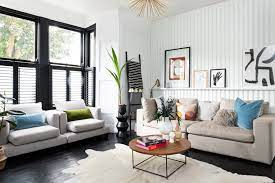
Color is a fundamental aspect of our daily lives, influencing our emotions, perceptions, and behavior in ways we often overlook. From the vibrant hues of a sunset to the monochromatic tones of a rainy day, colors surround us, shaping our experiences and evoking powerful responses.
This phenomenon forms the basis of color psychology, a field that explores the profound impact colors have on human cognition and emotions.
The bedroom is a sanctuary where we seek solace and relaxation after a long day. Its ambiance greatly influences our mood, emotions, and overall well-being. As we spend a significant portion of our lives in our bedrooms, it is essential to carefully consider the color scheme we choose for this personal space.
This article explores the various bedroom colors and their effects on individuals, providing insights into how color choices can influence our sleep patterns, relaxation, productivity, and overall mental state.
The Power of Color Psychology
Color psychology is the study of how colors affect human behavior, mood, and perception. It explores the subjective and psychological responses that colors evoke and seeks to uncover the underlying mechanisms behind these reactions. Although color preferences can vary across cultures and individuals, certain associations are deeply ingrained in our collective consciousness.
Calming Colors for Serenity and Relaxation
a. Blue: Blue is often associated with calmness and tranquility. It has been shown to lower blood pressure, heart rate, and promote a sense of relaxation. Light shades of blue can create a soothing and peaceful atmosphere, making it an ideal choice for those seeking a serene bedroom environment.
b. Green: Green is reminiscent of nature and is known to have a calming effect on the mind. It promotes a sense of balance and harmony, making it an excellent choice for those who want to create a peaceful and restful space. Soft, muted shades of green can induce a feeling of tranquility and promote a restful sleep.
Energizing Colors for Productivity and Vitality
a. Yellow: Yellow is a vibrant and energetic color that stimulates the mind and promotes creativity. It is associated with happiness, optimism, and warmth. Adding pops of yellow in a bedroom can create a cheerful and lively ambiance, which can be especially beneficial for those who want to boost their energy levels and productivity.
b. Orange: Orange is a warm and invigorating color that radiates positivity and enthusiasm. It promotes a sense of vitality and can be beneficial for individuals who need an extra boost of motivation. However, it is important to use orange in moderation as it can be overwhelming if used excessively.
Relaxing Neutrals for Versatility and Balance
a. Gray: Gray is a versatile and neutral color that can create a sense of calmness and sophistication in a bedroom. It acts as a balance between dark and light, providing a serene and peaceful environment. Various shades of gray can be combined with other colors to create a visually appealing and relaxing space.
b. Beige: Beige is a classic and timeless color that offers a sense of warmth and coziness. It creates a neutral backdrop that can be paired with a variety of accent colors to suit individual preferences. Beige promotes a sense of relaxation and can help create a harmonious atmosphere.
Restful Colors for Deep Sleep
a. Lavender: Lavender is often associated with relaxation and has been used for centuries to promote sleep. Its soothing and calming properties make it an excellent choice for bedrooms. Incorporating lavender hues, such as soft purples or pale lilacs, can help create a restful environment conducive to deep sleep.
b. Soft Pastels: Soft pastel colors, including light pink, peach, and mint green, have a gentle and soothing effect on the mind. These colors create a sense of tranquility and promote relaxation. They can be particularly beneficial for individuals who struggle with insomnia or high levels of stress.
Conclusion
Choosing the right color scheme for your bedroom can have a profound impact on your overall well-being. Understanding color psychology and considering your personal preferences can help you create a space that aligns with your desired emotional state.
Whether you seek a calming and restful environment or an energizing and productive atmosphere, the colors you choose can significantly influence your mood, sleep patterns, and overall quality of life. By harnessing the power of colors, you can transform your bedroom into a sanctuary that nurtures and supports your physical and mental health.























